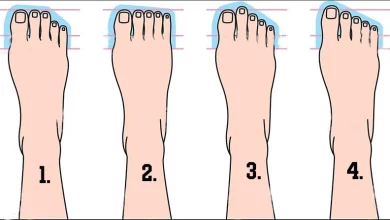This means your chair’s backrest should have natural curve that fits into the hollow of your lower back. Basically when sitting down your spine should be in contact with the backrest from your tailbone right up to your upper back.
6. Avoid High-Heels (for the ladies).
“Easy” say the men. “Not so easy!” shout the women. When you don’t need to wear them, don’t. Heels alter the body’s center of gravity and throw it out of alignment. If heels are a must, consider the smaller types if you are serious about improving your posture.
7. Develop an Awareness of your Posture
When people try to consciously improve their posture, they can often go for hours with poor posture before even remembering to correct it. This is the power of bad habits. To increase your awareness of the problem, it’s a great idea to keep a visual reminder at the place where you spend most of your time. For example, if you sit at a desk a lot, make a sketch of a stick figure man on a post-it note. Then every time you see this sketch you’ll ask yourself, “How is my posture? Are my ears in-line with my shoulders? Are my feet flat on the floor?”
8. Get Confident!
As stated previously, posture affects confidence but confidence also affects posture. The more confident you are, the better your posture will be. Confidence is nothing but a habit and can be learned. I may write an article on it in the near future.
9. When Bending Over to Pick Something Up, Don’t Fold at the Waist. Bend your knees, keep your spine straight and lift the object.
10. Don’t Overdo It! If you try to stay poker
-straight, you’ll feel uncomfortable and eventually give-up on great posture. Allow flexibility in your neck and knees. Shift your body weight around often. A rigid body is not what you’re after! Your spine has a natural curve, you’re not aiming to be a robot. Simply remember the ear, shoulder and hip alignment – that’s sufficient for a healthy posture.



